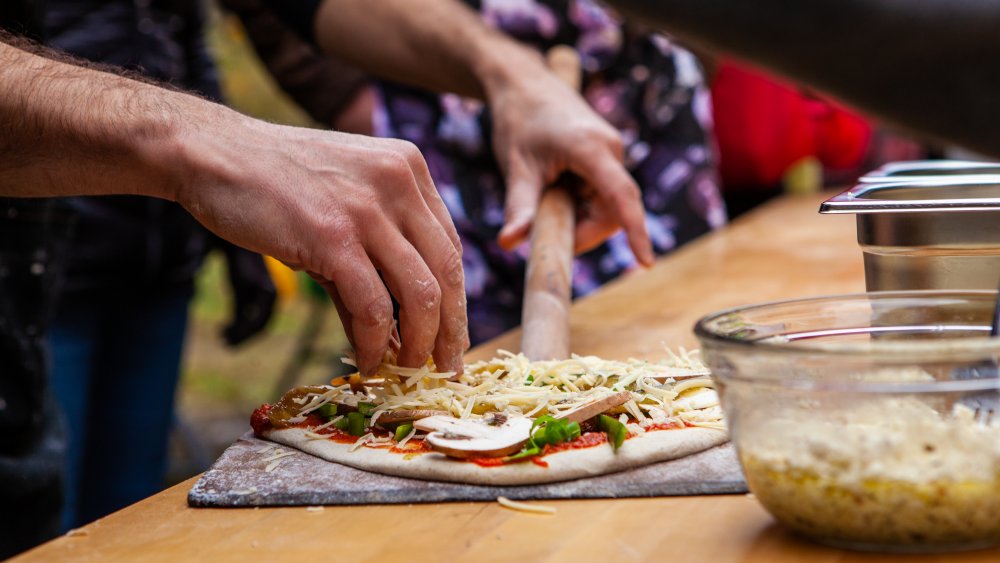The One Thing You're Forgetting When Making Pizza At Home
If you've ever taken part in the art of making homemade pizza — even at the Boboli level — you've no doubt wondered about how to make your homemade pizza taste as good as your favorite pizzeria. There are lots of ways you can screw up making a homemade pizza, from stretching the dough too thin to adding too much cheese. Yes, it's entirely possible to add too much cheese.
When most of us think about making homemade pizza, we're probably thinking about what goes on top of the pizza dough. Sauce, cheese, toppings galore... It's worth paying attention to what goes under the pizza dough too, though. Cornmeal could very well be the thing that takes your homemade pizza from amateur to pro-level in terms of execution and taste.
According to PMQ Pizza Magazine, cornmeal acts as a release agent and allows your pizza to easily slide off the peel and into the oven. Using cornmeal isn't really necessary with conveyorized ovens, but then again, you probably don't have a conveyorized oven in your home.
The cornmeal also adds to the pizza's texture and taste
According to a survey on Serious Eats, over 80 percent of respondents enjoy some cornmeal on the bottom of their pizza crust. The reason for this has everything to do with the crunchy texture it leaves on the bottom of the pizza that adds to the taste of the crust. You probably wouldn't opt to use cornmeal on all types of pizza, though, and it's most commonly found in deep dish pizzas or your standard thin slice pizzeria-style pizza.
People can be pretty picky about there pizza, and some folks simply don't want cornmeal anywhere near their pizza. As a cornmeal substitute, Cooks Illustrated recommends semolina flour. It won't char like regular flour and works just as well as a dough releasing agent as cornmeal does, but without the crunchy texture that cornmeal can leave on the crust. If you're making a Neapolitan pizza, Serious Eats recommends going with the flour strategy all the way.

